
We collect basic website visitor information on this website and store it in cookies. We also utilize Google Analytics to track page view information to assist us in improving our website.
If you’re passionate about metal cutting or just keen to learn more, you’ve landed in the right place.
For over 38 years, Amber Steel has been at the forefront of metal cutting services, specializing in laser cutting, flame cutting, and plasma cutting. Our expertise has carved a niche in this cutting-edge industry, delivering precision and excellence across industrial projects big and small.
In our blog, we’ll share a mix of useful tips, innovative applications, our thoughts on sustainability in steel cutting, and more. Expect stories from the cutting floor, insights into how our processes can streamline projects across industries, and a few lessons we’ve learned along the way.
While we keep some of our trade secrets under wraps, this blog is designed to offer valuable nuggets of wisdom that you simply won't find anywhere else. Whether you’re a professional in the industry or someone fascinated by the possibilities of metal cutting, you'll find something of value here.
So, stick with us as we delve into the finer points of metal work. We’re glad to share our insights and lead discussions that matter to our industry.
How precision metal cutting propels the aerospace industry, from constructing lighter frames to enhancing aerodynamics.
The role of advanced metal cutting in automotive manufacturing, driving innovations in vehicle design and efficiency.
All about the robust and versatile process of flame cutting, ideal for tackling thicker metals with precision and ease.
Discover the art of crafting metal furniture, where cutting techniques meet design to create both functional and aesthetic pieces.
A behind-the-scenes look at the mechanics of metal cutting technologies and the science that makes them tick.
Laser cutting is where extreme precision meets efficiency, allowing for intricate designs and clean finishes.
The critical role of precise steel cutting in developing reliable and intricate medical devices.
How steel cutting supports the oil and gas industry with components that withstand extreme environments and pressures.
Known for its speed and versatility, plasma cutting slices through conductive metals with hot plasma.
Safety first! Tips and insights on maintaining a safe environment while handling powerful metal cutting equipment.
The backbone of construction, where steel fabrication and cutting technologies create frameworks that shape skylines.
Sustainability
A look at sustainability in metal cutting, focusing on practices that reduce waste and conserve energy to protect our planet.
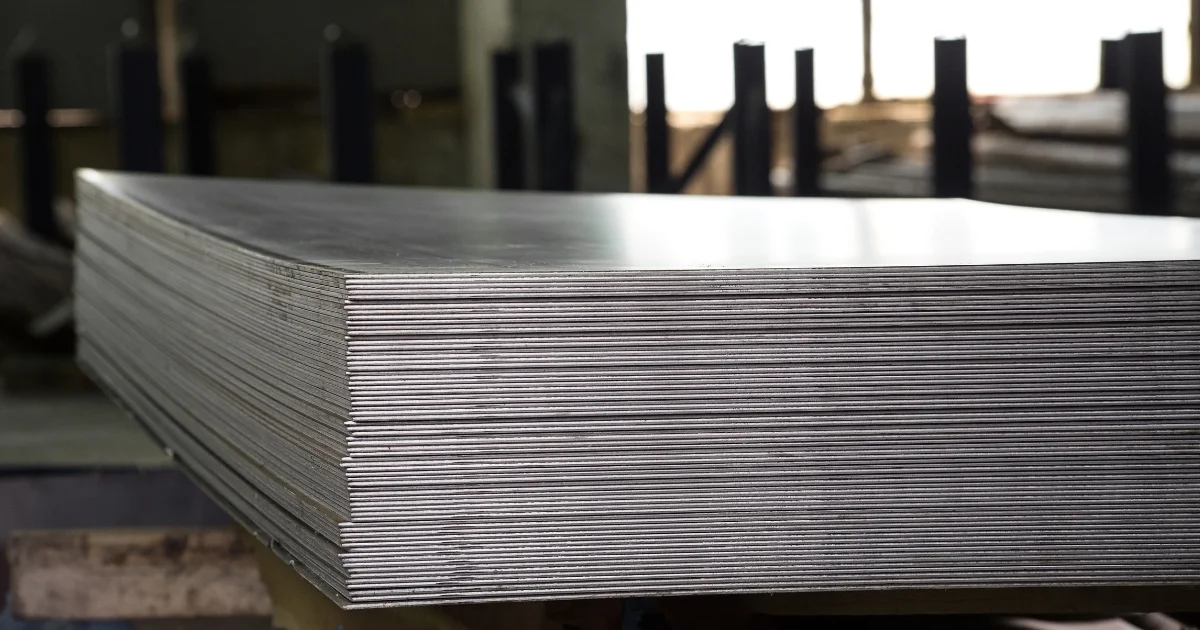
Warped parts don't just slow things down. They throw off tolerances, misalign assemblies, and create a ripple effect of rework across production lines – especially when parts are stacked or welded.
Thermal cutting often causes distortion, especially when too much heat is applied too slowly. The more heat a process introduces, and the longer it lingers, the more likely it is that edges will lift or surfaces will shift. This is especially true for thin-gauge metals, unsupported cuts, or parts with tight dimensional tolerances.
Laser cutting distortion is significantly lower than what's seen in plasma or oxy-fuel processes. With its concentrated beam and fast travel speed, laser systems reduce the heat-affected zone and control thermal stress more precisely. The result is cleaner cuts and flatter parts, without adding post-processing time.
In this post you'll discover how distortion happens during cutting, what makes laser systems better at controlling it, and when it makes sense to prioritize flatness over cutting speed.
Distortion is one of the most common challenges in thermal cutting. When heat is applied to metal, the material expands unevenly. Hot zones grow while surrounding areas remain cooler. As the part cools, internal stresses form, which can lead to visible warping or more subtle dimensional shifts.
The more heat a cutting process introduces, the higher the risk. Plasma and oxy-fuel systems create wide heat-affected zones that increase the chance of thermal stress. Slow travel speeds or long dwell times only make the problem worse.
Several factors influence the severity of warping:
Material thickness variance
Heat distribution patterns
Cooling rate differences
Residual material stress
Cut path sequencing
Thin sheet metal and complex part geometries are especially prone to deformation. Even slight movement can affect flatness, edge precision, or downstream assembly. In high-volume environments, these issues lead to added labour, delays, and rework.
Understanding how different cutting methods handle heat is essential. It's important both for making clean cuts and keeping parts stable and production predictable from start to finish.
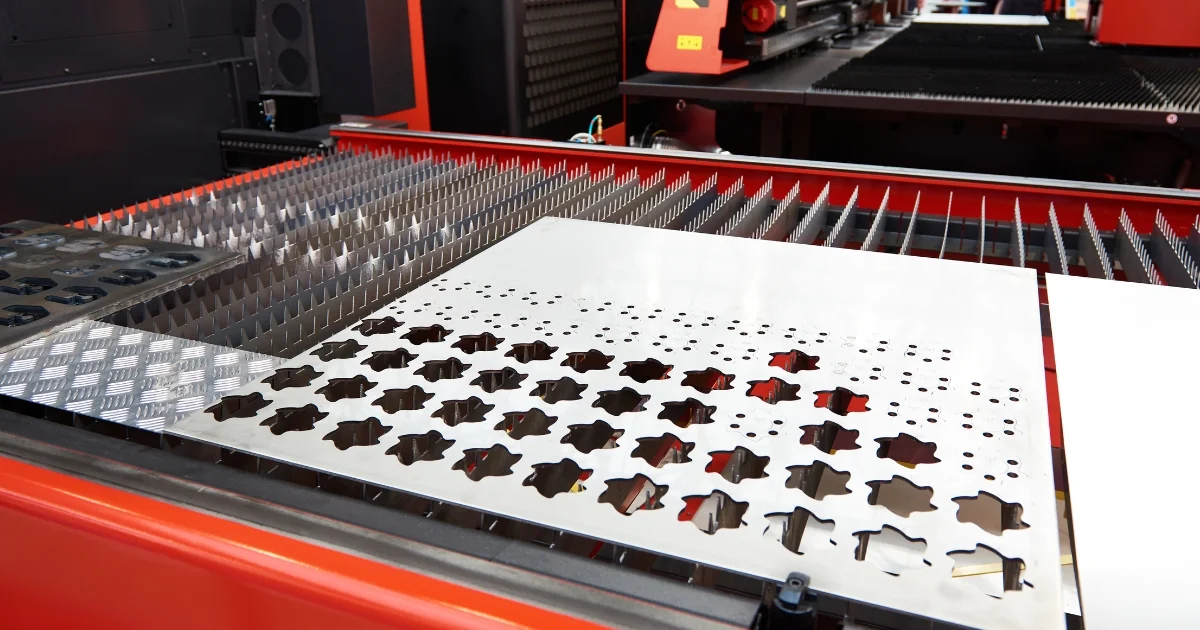
Laser cutting has a clear edge when part flatness matters. The process uses a tightly focused beam that applies heat to a very small area. Because the beam moves quickly and doesn't linger, the metal doesn't have time to build up the kind of stress that leads to warping.
Modern 6,000W and 10,000W fiber lasers create beams measuring just 100-150 microns in diameter – thinner than a human hair. This precision means heat affects only the immediate cut area rather than spreading throughout the workpiece. The result is a dramatically reduced heat-affected zone (often up to 80% smaller than plasma or flame cutting), which keeps parts stable and minimizes edge deformation during cooling.
Unlike plasma or oxy-fuel, which create wide heat-affected zones, laser systems introduce less total heat. That smaller footprint means less expansion during the cut and less contraction during cooling. Parts stay flatter, and the overall shape holds up better.
The concentrated energy also means faster cutting speeds, giving heat less time to disperse through the material. When cutting 16 mm steel, a high-powered fiber laser slices through at speeds up to 10x faster than flame cutting, significantly reducing the heat's dwell time.
Today's fiber laser systems don't just cut blindly. They incorporate sophisticated features that further minimize distortion:
Variable pulse technology adjusts the beam's energy profile based on material characteristics
Adaptive focus control adjusts the focal point during cutting to maintain optimal energy distribution
Process monitoring systems make real-time adjustments to prevent heat buildup
These automated systems constantly adjust cutting parameters in real time to maintain the ideal balance between speed, power, and heat, even on complex geometries or multi-pass cuts.
This is especially important when working with thinner materials, precision brackets, or components that need to stay square and level. Laser cutting distortion tends to stay within tighter tolerances, which helps avoid surprises later, whether you're stacking, welding, or aligning parts in a jig.
In high-precision manufacturing, part flatness can be critical. For example, in automotive subassemblies, a single warped bracket can throw off an entire alignment jig, forcing manual correction and risking misalignment in welds or fastener placement.
Even small distortions can cause problems during assembly or final checks. Parts that don't sit flush, align properly, or meet tolerance specs add time, labour, and risk, and often require costly secondary machining to correct. As The Fabricator points out, good part levelling makes fabrication predictable, especially when flatness impacts every step downstream.
This matters most when parts are welded, bolted, or stacked as part of a larger system. A slight bow or twist can throw off hole alignment, cause gaps in weld joints, or create stress points that reduce structural integrity. In automated environments, that kind of variation can stop production altogether.
Laser cutting helps avoid these issues by producing consistently flat parts from the start. With tighter control overheat input and cleaner edges, laser-cut components reduce the need for secondary processes like straightening or machining. That saves time and preserves dimensional accuracy throughout the build.
When tolerances are tight, flatness becomes part of the spec. Laser systems are built to meet that need, especially in industries where part consistency is tied directly to performance and safety.
Laser cutting isn't a one-size-fits-all process, especially when distortion prevention is a priority. Different materials require specific approaches.
For mild steel, modern fiber lasers operate comfortably across thicknesses from 0.5 mm to 25.4 mm with minimal warping. The key lies in adjusting assist gas type and pressure based on thickness. Nitrogen assist gas works exceptionally well for thinner materials, while oxygen provides better heat control for thicker sections.
Mild steel is one of the most common choices. It holds up well under focused heat and delivers sharp, consistent edges. Stainless also cuts clean, and its stability makes it a good option when flatness matters.
Stainless steel presents unique challenges due to its lower thermal conductivity, which causes heat to linger near the cut zone. This can increase distortion, especially in thin sheet applications or intricate geometries. Laser systems with real-time monitoring help avoid hot spots by adjusting the beam dynamically as cutting conditions change.
Heat tends to concentrate rather than dissipate, increasing warping risk. For stainless applications, reducing power while increasing speed often yields better results than maximum power settings.
Aluminum's high thermal conductivity and reflectivity make it particularly challenging. The material quickly spreads heat beyond the cut zone while simultaneously reflecting a portion of the laser energy. These properties can lead to unpredictable distortion patterns if not properly managed with speed, power, and gas optimization.
Current best practices for aluminum involve:
Higher cutting speeds with moderate power settings
Specialized assist gas mixtures
Strategic cut path planning that minimizes heat accumulation
Most distortion issues show up when the material is too thin, unsupported, or cut too slowly. That's where process control and smart part layout come into play. The right equipment (and the right operator) can make a big difference in how the material behaves during and after the cut.
Distortion isn't only about the cutting beam, but also about how the job is planned. Smart nesting software plays a big role in minimizing heat buildup across the sheet. By arranging parts to reduce torch movement and avoid heat stacking, modern systems help maintain both material stability and overall flatness.
The order and direction of cuts significantly impact warping potential. Cutting from the inside out allows interior features to be removed before outer contours, reducing stress during the cutting process. Similarly, alternating between different areas of the workpiece prevents localized heat buildup.
Nesting software can identify shared edges, reduce torch lift time, and space parts to avoid heat stacking, which is especially important when working with thin sheet metal or aluminum. It also optimizes spacing and adjusts for part geometry to keep heat input balanced. That means the torch doesn’t dwell too long in one area or cut in a way that builds up thermal stress. These small adjustments add up fast, especially in high-mix, high-volume production environments with demanding tolerances.
Modern nesting software can analyze parts and automatically generate cutting sequences that minimize thermal stress. These programs consider factors like material thickness, geometry complexity, and proximity of features to calculate the optimal path.
Proper material support plays a crucial role in distortion prevention. Slat designs with minimal contact points reduce heat transfer, support part stability, and prevent distortion from uneven cooling. Some advanced systems incorporate programmable support pins that adjust based on part geometry.
For particularly distortion-prone applications, vacuum tables can hold material firmly during cutting while allowing even cooling across the surface. This additional stabilization becomes crucial when working with thin sheets that are especially susceptible to thermal stress.
Keeping parts flat and within specification doesn't happen by accident. It requires deep understanding of how heat affects different materials combined with strategic use of modern laser cutting capabilities.
The newest generation of fiber laser systems brings unprecedented control over the cutting process. With features like auto-focus, real-time monitoring, and smart path planning, modern fiber lasers deliver distortion-free parts, even on thin metals, intricate designs, or stacked assemblies.
Struggling with warped parts or rework delays? Let’s cut the distortion. Fiber laser cutting can keep your parts flat, fast, and ready for final assembly – without extra post-processing.
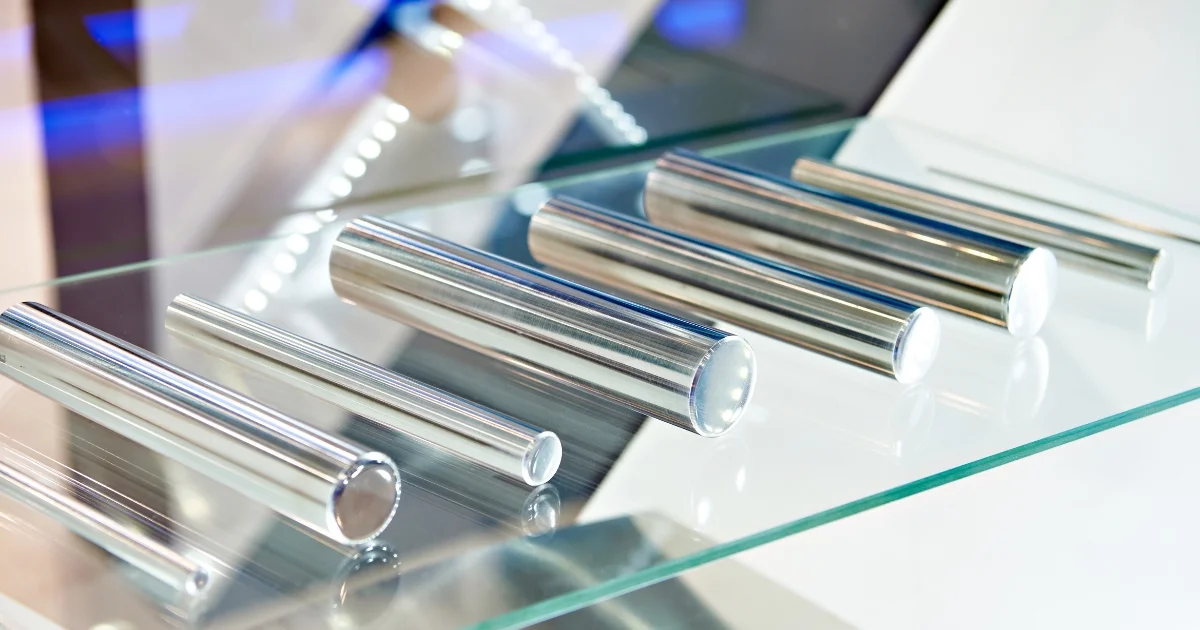
High-nickel alloys are famously tough, heat-resistant, and prone to work hardening, which means conventional cutting methods can quickly turn into a slow, expensive mess. Cutting these alloys demands specialized tools and processes.
Engineers working with aerospace, automotive, and energy components know the stakes. Choose the wrong cutting process, and things can go sideways fast: distorted edges, excessive tool wear, or heat-affected zones (HAZ) that weaken material integrity. With nickel alloys commanding premium prices and demanding precision, there’s little room for error or waste.
That’s why cutting high-nickel alloys requires a careful comparison between laser, plasma, and flame cutting. Each method brings something different to the table: laser offers surgical precision, plasma brings speed and strength, and flame… well, it might not belong in this fight at all.
This post breaks down how each cutting process performs under pressure – literally. You’ll get clarity on which method suits high-performance materials, what limitations to watch for, and how to choose based on part geometry, thickness, and downstream processes. Whether you're after tight tolerances or just trying to stay within budget, understanding these trade-offs is key to getting the job done right the first time.
Cutting high-nickel alloys can slow production to a crawl. These metals are built to endure where others fail, and that same strength makes them extremely difficult to machine. When standard cutting methods fall short, delays stack up fast, and costs rise just as quickly.
These alloys – Inconel, Hastelloy, Monel, Incoloy – are designed for the most extreme conditions. They typically contain between 50-70% nickel, along with other elements like chromium, molybdenum, and tungsten. In environments like chemical plants, aerospace systems, and nuclear power, these materials perform where ordinary steel wouldn’t last. But cutting them? That’s where things get tricky.
One of the biggest issues is work hardening. Unlike standard steels, these alloys don’t get easier to cut – they get harder. Every time the tool passes through the material, it compresses the grain structure, which increases its hardness. A cut that starts out manageable quickly becomes a challenge.
Heat buildup is another major problem. These metals don’t move heat the way carbon steel does. Instead, heat collects right at the cutting point. In thin sections, this can lead to warping or damage. And for tools, that concentrated heat means faster wear and shorter tool life.
Flame cutting? That’s off the table in most cases. High-nickel alloys resist oxidation so well that the chemical reaction needed for flame cutting just doesn’t happen. The same protective oxide layer that makes them great in corrosive environments prevents the cut from even starting.
And then there’s the cost. These materials are expensive, often five to eight times the price of standard steel. Even a small fabrication error can turn into a serious loss. With high-nickel alloys, the margin for error is tight, and the stakes are high. That’s why your cutting method matters so much.
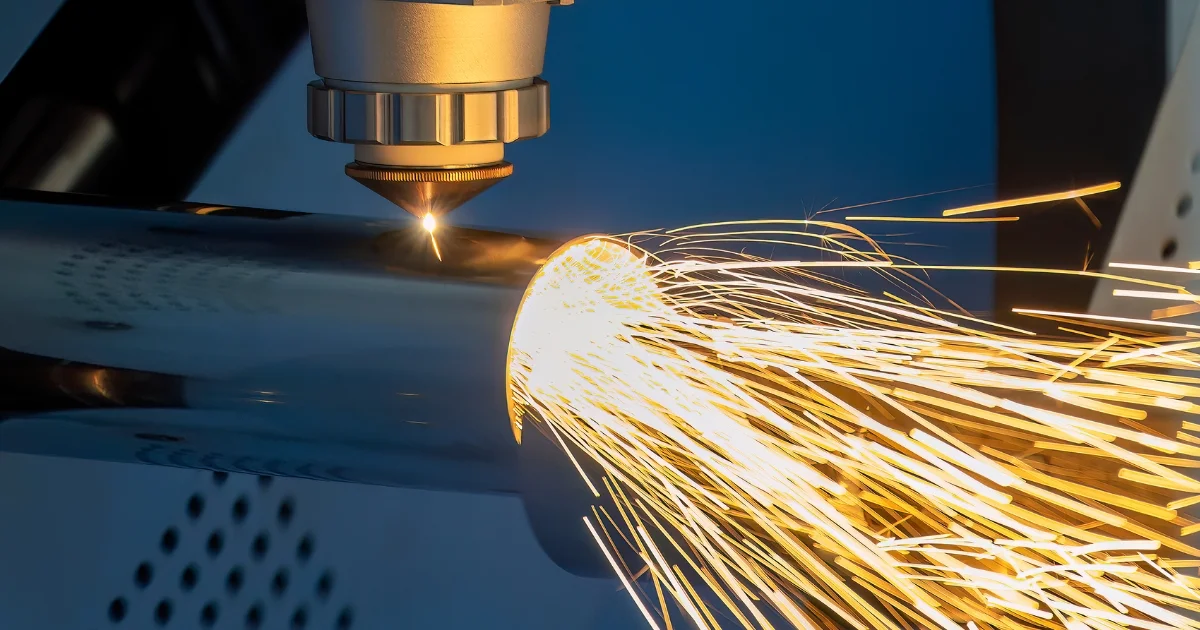
For high-nickel alloys, fiber laser technology has changed the game. This method delivers exceptionally clean cuts with minimal heat-affected zones (HAZ), preserving material properties almost to the cut edge. Modern fiber lasers concentrate immense energy into a precise focal point, with assist gas jets efficiently clearing molten metal before heat can spread.
The sweet spot for laser cutting lies in thin-to-medium stock, typically up to 12 mm thick. The heat-affected zone measures a mere 0.2-0.5 mm in most nickel alloys, which is about one-third what plasma produces. This precision matters enormously when working with aerospace components or medical devices where properties must remain intact right to the edge.
Beyond precision, laser cutting minimizes waste through narrow kerf width and optimized nesting. Cut edges emerge clean enough to often skip secondary finishing operations entirely. For complex geometries or intricate features in Inconel or Hastelloy sheet, nothing else comes close to what laser cutting can achieve.
Laser cutting works like a surgeon: precise, clean, and controlled. It adds just enough heat to cut without compromising surrounding material. For heat-sensitive nickel alloys, this controlled approach makes all the difference.
The limitations? Laser struggles with thick sections. As material thickness increases, power requirements surge while cutting speed plummets. Some reflective nickel alloys can cause beam reflection hazards. And while operating costs exceed other methods, this premium typically pays for itself through reduced scrap, minimal rework, and superior edge quality.
High-powered systems, such as 10 kW fiber lasers with 72” cutting beds, enable efficient processing of larger sheets and tight nesting for material savings. This setup is especially effective when working with wide-format stock or producing high volumes of precision parts in aerospace or medical fabrication.

CNC plasma cutting offers a solid middle ground when working with high-nickel alloys, especially in medium to heavy thicknesses. It can handle stock up to about 1.25 inches and cuts faster than laser on thicker materials. The process uses superheated ionized gas forced through a narrow nozzle to melt through even highly resistant metals.
What makes plasma appealing is the economics. Equipment and operating costs are often 40-60% lower than laser, depending on system setup and workload. High-definition plasma systems have come a long way, improving edge quality and narrowing the performance gap with laser.
Still, there are trade-offs. Tolerances typically land around ±0.040”, which is acceptable for many applications but can fall short for aerospace or medical specs. The heat-affected zone is also wider (usually 1-2 mm in nickel alloys), so parts may need secondary finishing, especially before welding or precision machining.
For general fabrication, rough profiling, or non-cosmetic parts, plasma is practical and efficient. Many shops use it as a first pass before machining critical features, making it a reliable tool when balancing cost, speed, and material performance.
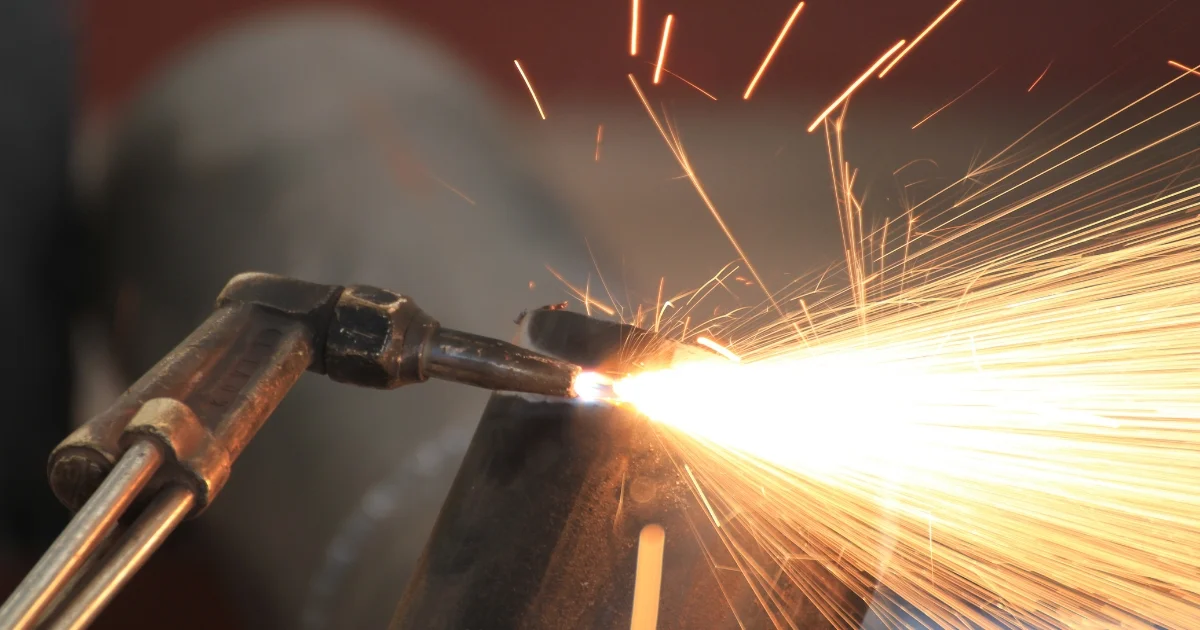
Flame cutting has earned its place in the steel world. It's tough, dependable, and handles thick carbon plate like a champ. But once high-nickel alloys enter the picture, that dependability starts to break down.
The process itself is straightforward: preheat the metal, hit it with a jet of pure oxygen, and let combustion do the heavy lifting. This works well for mild and carbon steels because they oxidize easily – that reaction is what makes the cut possible. But high-nickel alloys? They’re built to fight oxidation, not feed it. That same resistance that makes them perfect for corrosive environments is exactly what makes flame cutting ineffective.
Nickel-based alloys just don’t respond well to the process. They either refuse to ignite or produce messy, uneven cuts when they do. You’re left with jagged edges, massive heat-affected zones, and distortion that can undo the very properties the material was chosen for in the first place. In thinner sections, the heat input alone can do more damage than good.
That said, flame cutting isn’t totally off-limits. It still sees occasional use for rough prep work or when dealing with mixed-metal slabs where only part of the material resists oxidation. But in those cases, it’s less a precision tool and more a brute-force workaround.
So, while flame cutting is still the go-to for thick structural steel, it’s rarely the right move for high-nickel alloys. These materials are designed to withstand extreme heat, not surrender to it. And that’s exactly why flame cutting usually isn’t part of the conversation.
Cutting high-nickel alloys isn’t just about getting through the material but also about what happens to the metal around the cut. And that’s where the heat-affected zone, or HAZ, becomes a deal-breaker if not handled properly.
If too much heat travels into the surrounding area, the alloy’s internal structure can shift. Grain boundaries may distort, mechanical strength can drop, and corrosion resistance can weaken, all before the part even enters service. And for materials that cost five to eight times more than mild steel, that’s not just a quality issue – it’s also a financial one.
Laser cutting tends to have the smallest HAZ (often under 0.5 mm) thanks to its pinpoint focus and efficient heat management. Plasma, while faster, usually creates a wider zone between 1-2 mm, especially on thicker sections. Flame cutting generates the largest HAZ by far, making it unsuitable for alloys where performance and integrity are non-negotiable.
For high-nickel alloys, where every micron counts, HAZ control isn’t a luxury—it’s a necessity. The more heat you introduce, the more likely you'll compromise the very qualities the material was chosen for in the first place. That’s why cut quality has to go beyond surface finish, considering what’s beneath the surface, too.
When it comes to cutting high-nickel alloys, choosing the wrong method is inefficient and expensive. These materials demand more than brute force. They require precision, control, and an understanding of how heat and stress affect performance long after the cut is made.
Laser cutting offers unmatched precision and minimal HAZ, making it ideal for aerospace and medical-grade components. Plasma provides a cost-effective middle ground for thicker sections and general fabrication. And while flame cutting isn't suited for high-nickel alloys, it remains a critical tool for carbon steel and structural applications where thickness and scale matter most.
The bottom line? There’s no one-size-fits-all approach. Matching the cutting method to the material’s behaviour is where projects succeed or stall. Whether you're dealing with nickel alloys, structural plate, or a complex mixed-material order, expert guidance matters.
Working with nickel alloys? Get expert support on choosing the right cutting method before costly scrap or HAZ issues slow you down.